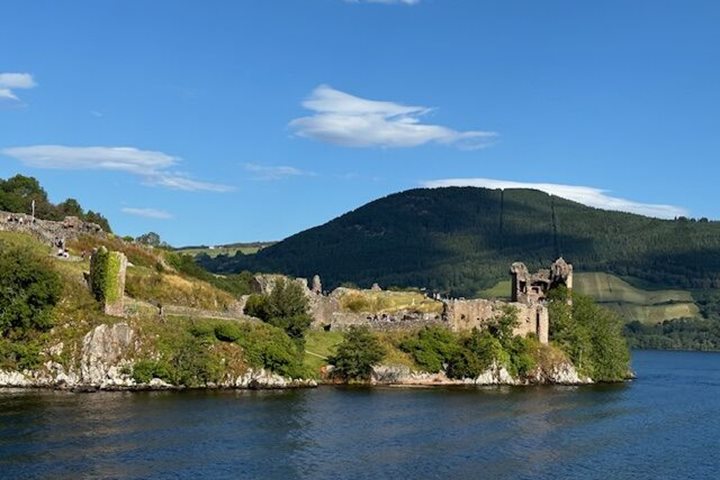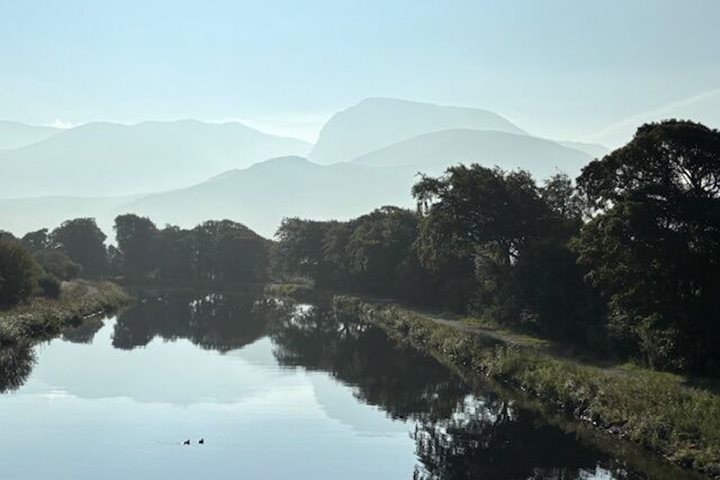We departed Corpach under the shadow of mighty Ben Nevis, to continue our journey through the Caledonian Canal. We ascended Neptune’s Staircase, a section comprised of eight staircase locks that makes up the longest staircase lock in Britain. During our hour and a half traverse, we made our way through locks that were once hand-operated but in these modern times run under hydraulics operated by employees of Scottish Canals.
In the late morning, our photo instructor gave a presentation on digital photography to continue to inspire learning with the photo aficionados of the group. Then around noon we found our way onto the highest part of the canal at Laggan Avenue, a 1.5-mile-long section of the canal whose edges aur thickly lined with verdant trees. The photographers on the ship spent quite a bit of time using the information they’d just learned to make images of the reflections of the forest and sky in the glassy canal waters.
The afternoon afforded us the opportunity to disembark after Kytra Locks to walk along the towpath to our berth for the night at Fort Augustus. Once everyone had reached Fort Augustus, some set out to explore the town while another group donned raingear and hiking boots to go on a muddy hike through the outskirts of the town. At the grave of John Anderson, who was a friend of poet Robert Burns, expedition leader Carol Knott read a touching poem called, “John Anderson my Jo.” Their hike also took them through flower-filled sheep pastures and craggy oak forests. After the hike some hardy souls decided to stretch their arms and brave the continuing rain by kayaking down a section of the canal lined with Scottish Oaks.
The day ended with the usual Recap, which was highlighted by National Geographic Expert Jim Richardson showing his photography slideshow, paired with a musical piece inspired by the Hebrides written by composer Mendelssohn.







